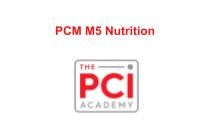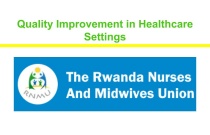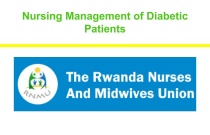Combined Hormonal Contraception (CHC) Methods
Fiona Baldwin
This session looks at the use of combined hormonal contraception (CHC) methods containing oestrogen and progestogen. It gives an overview of the advantages, disadvantages and possible side-effects, as well as how to counsel individuals wishing to commence or continue using CHC.
NCD Operations M4: Call and Recall
Primary Care International (PCI)
In this unit you will consider why having an appointment and call and recall system is important for NCD management. You will look at some examples of how appointment and call / recall systems can be implemented. Before you start this module find out about the appointment system and any call/ recall systems for missed appo....
PCM M6: Gynaecology Part 1
Primary Care International (PCI)
This learning unit will cover some common gynaecology disorders. You may find it helpful to have a pen and paper to take notes Guidance in this learning unit is based on the National Institute for Health and Care Excellence (NICE) guidelines, along with others referenced at the end.
PCM M4 Disorders Due To Substance Misuse
Primary Care International (PCI)
In this unit we'll look at how to help patients with disorders due to alcohol and drug misuse.
PCM M5 Growth and Development
Primary Care International (PCI)
In this unit we'll look at how you can support healthy growth and development.
PCM M5 Nutrition
Primary Care International (PCI)
In this unit we'll look at the benefits of a healthy diet.
Clinical Considerations for Monkeypox in Children
Dr Juli Reynolds
Historically, monkeypox has been documented in children and adolescents living in areas where monkeypox infections occur more commonly. Once illness occurs, the clinical presentation is expected to be similar to illness in adults. However, it is not known whether children are more susceptible to monkeypox than adults or whe....
Glucose Control & Hypoglycaemia
Dr Juli Reynolds
This course has been developed for nurses working in NICU, PICU and paediatric wards. The course will enable you to develop your performance in practice, theorise practice and develop the knowledge and skills required to be competent in the role of a neonatal intensive care nurse.
Colour (Anaemia and Cyanosis)
Dr Wendy Tyler, Mrs Susan Braid, Mrs Emma Morris, and Dr Alan Fenton
This session describes how to to identify, stabilise and transfer an unwell newborn who presents with signs of a pale colour or cyanosis.
Hypoxia and Encephalopathy
Dr Wendy Tyler, Jacqui Angell, Paula Pryce, and Dr Alan Fenton
This session describes the stabilisation and transfer of a baby born in poor condition in a community setting and subsequent safe transfer for both staff and baby.
NCD Operations
Primary Care International (PCI)
This comprehensive online course is designed to equip primary care practitioners with essential skills and knowledge to develop and manage effective systems for the care of patients with non-communicable diseases (NCDs). With a focus on creating sustainable operations that support NCD care, the course comprises one intensive mod....
Paediatrics
Primary Care International (PCI)
Depending on your setting routine childhood development and immunisations may be carried out in primary care or in other settings, but as a primary care clinician it is important we are able to assess growth, development and nutrition, and identify when an infant or child may need referral to a paediatrician. The learning pat....
Helminthiasis
Dr. Yaa Owusu-Agyeman
This course covers the epidemiology, pathophysiology and clinical management of common parasites in the helminth category in tropical countries and some other countries of the world. To facilitate learning, diagrams on their life cycles are included in the guide.
Clinical Management of Migraine
Dr. Bob Kagoro
This course explores in depth the clinical management of migraine from a primary healthcare point of view and includes a review of signs and symptoms to prophylaxis and treatment.
Prevention and Management of Obstructed Labour
United Nations Population Fund and LSTM
To understand the contribution of obstructed labour to maternal mortality and morbidity To understand how to identify obstructed labour To update knowledge and skills in the prevention of obstructed labour To update knowledge and skills in the management of obstructed labour
Oral Pre-Exposure Prophylaxis (PrEP)
Jhpiego and World Health Organization
The Oral PrEP eLearning Tool for Clinicians course provides instructions for managing PrEP services in accordance with the information in the WHO Implementation Tool for Pre-exposure Prophylaxis of HIV Infection. The course is for practicing clinicians around the globe who currently have a client population at high-risk for c....
Management of Post-Exposure Prophylaxis (PEP)
Jhpiego in collaboration with Fred Hutchinson Cancer Research Center, Kenya Medical Research Institute (KEMRI), Jomo Kenyatta University of Agriculture and Technology (JKUAT), and the World Health Organization
This module provides guidance on management of Post-Exposure Prophylaxis (PEP) in accordance with the Kenya HIV Prevention and Treatment Guidelines 2022 Edition, and targets health care workers providing HIV prevention, care and treatment services.
The Role of the Professional Midwifery Advocate
Clare Capito
This session will explain the role and function of a professional midwifery advocate (PMA) and how the role facilitates the 4 functions of the Advocating for Education and Quality Improvement (A-EQUIP) model.
Quality Improvement in Healthcare Settings
BISANUKURI Evergiste
1) This course provides an overview of quality improvement (QI) in health care settings. While QI has a long history in health care and is a central component of recent health reform efforts, It is now widely recognized that incorporating quality improvement in an organization’s vision, mission and operations can enhance proce....
Headache
Mr. Emmanuel Ntakiyisumba
• An understanding of the clinical features of primary and secondary headaches disorders is essential if a management plan for patients is to be established. • With this in mind ability to quickly recognize the characteristics of commonly presented headaches will allow successful interaction with the patients in order to pr....
Nursing Management of Diabetic Patients
Adrien UWIZEYIMANA and Mr. KARERA Eric
•The major sources of the glucose that circulates in the blood are through the absorption of ingested food in the gastrointestinal tract and formation of glucose by the liver from food substances. •Diabetes mellitus is a group of metabolic diseases that occurs with increased levels of glucose in the blood. •Diabetes mellitus....
Healthcare Staff Performance Management
Ms. Sandrine DUSHIMIMANA and Mr. Evergiste BISANUKURI
The course of Healthcare staff performance management is designed to equip Healthcare workers and authorities in the healthcare system with effective performance management skills which are needed in their daily activities.
Oxygen Administration
INGABIRE Marie Jeanne, and UWIMANA Marie Chantal
Oxygen administration is the process by which supplemented oxygen is administered in high concentration than that of atmospheric air. Clinicians initiate oxygen administration for a variety of reasons.
Financial Accounting
Geoffrey I Injeni
In this module we will discuss various branches of accounting and fincnace, information in financial statements, evaluations and sources for Financial Accounting
Effective Diagnosis and Treatment of Transthyretin Amyloid Cardiomyopathy (ATTR-CM)
Kathleen Byrne
Join Kathleen Byrne CRNP, FPCNA, CLS of Johns Hopkins Heart and Vascular Institute on a journey through recognizing signs and symptoms of Transthyretin Amyloid Cardiomyopathy (ATTR-CM). Certain types of ATTR-CM have an expected mortality in as soon as 6 months, if left untreated. Early recognition and effective treatment are cr....
























